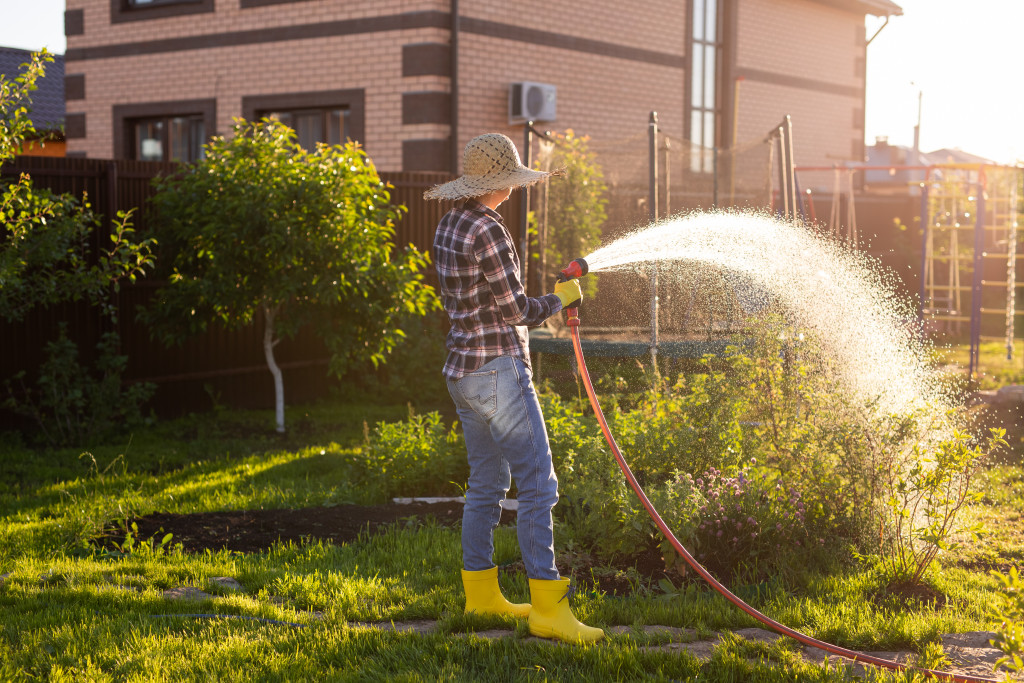The summer heat is picking up this year. The country experienced some of its hottest nights in July, and it’s expected to continue in the coming months. People can survive the heat, but their plants might not.
Plants are susceptible to the same heat as people and can even get sunburned. This is because the leaves of a plant act as its solar panels, absorbing sunlight and converting it into food for the plant. If the leaves get too much sun, they can get damaged, and the plant won’t be able to make food. Some plants sensitive to hot climates are tomatoes, potatoes, and eggplants. Thankfully, there are a few things you can do to help your plants survive the summer heat:
Get a Greenhouse
If there is one thing you should consider investing in your garden, that would be a greenhouse.
A greenhouse is a great way to protect your plants from the summer heat. You can control the temperature in a greenhouse, so you can keep it cooler than the outside temperature. It will help your plants stay healthy and thrive during the summer.
Greenhouses can be expensive, but there are affordable options available. The average cost of a greenhouse is around $300. You can also build your greenhouse if you’re handy with tools.
You still have to keep an eye out on your plants sometimes, even if they are inside your greenhouse. Also, don’t forget to water them! If you can’t afford a greenhouse, you can build a shade structure for your plants.

Build a Makeshift Shade Structure
If you can’t afford a greenhouse, you can build a makeshift shade structure for your plants.
You will need some materials for this, such as a tarp, rope, and some sticks or poles. First, find a spot in your garden that gets partial sun. Then, tie the tarp to the sticks or poles to create a shady area for your plants. It won’t be as effective as a greenhouse, but it will still help your plants survive the summer heat.
You can build a shaded patio if you have the money for it. These patios have a roof and walls to keep the sun out. It’s an excellent option if you have a lot of plants that need protection from the sun.
Choose Heat-Tolerant Plants
Some plants are more tolerant to heat than others. Therefore, if you live in an area with a hot climate, it’s best to choose plants that can survive in that environment.
Some examples of heat-tolerant plants are cacti, succulents, and agave. These plants don’t need a lot of water, so they’re perfect for hot climates. If you live in a cooler climate, you can still grow these plants. Just make sure to water them more often.
Move Your Plants Indoors
If the summer heat is too much for your plants, you can move them indoors. This is an excellent option if you have a lot of plants that need protection from the sun.
You must find a spot in your house that gets partial sun. A south-facing window is ideal. You can also use grow lights to give your plants the needed light.
Make sure to water your plants regularly, even if they are indoors. The soil should be moist but not wet. You can also mist your plants with water to help them survive the summer heat.
Install a Smart Irrigation System
If there is one thing that your plants need the most during the summer, it’s water. But sometimes, it’s hard to remember to water your plants every day. That’s where a smart irrigation system comes in handy.
A smart irrigation system is a watering system controlled by a computer. It can be programmed to water your plants based on the weather and the type of plant. This is an excellent way to ensure your plants get the water they need during the summer heat.
There are many different types of smart irrigation systems available. The average cost of a system is around $200.
When building a smart irrigation system, you must change your garden to cater to it. This means you’re going to need to move your plants a bit. If you want to avoid this, consider hiring a landscaping service to help you out. They can ensure that your irrigation system can cater to your plants while making your garden look beautiful.
You can see many different ways to grow your plants during the summer. Choose the method that best suits your needs and budget. And don’t forget to water your plants regularly to ensure they thrive in the hot weather.





